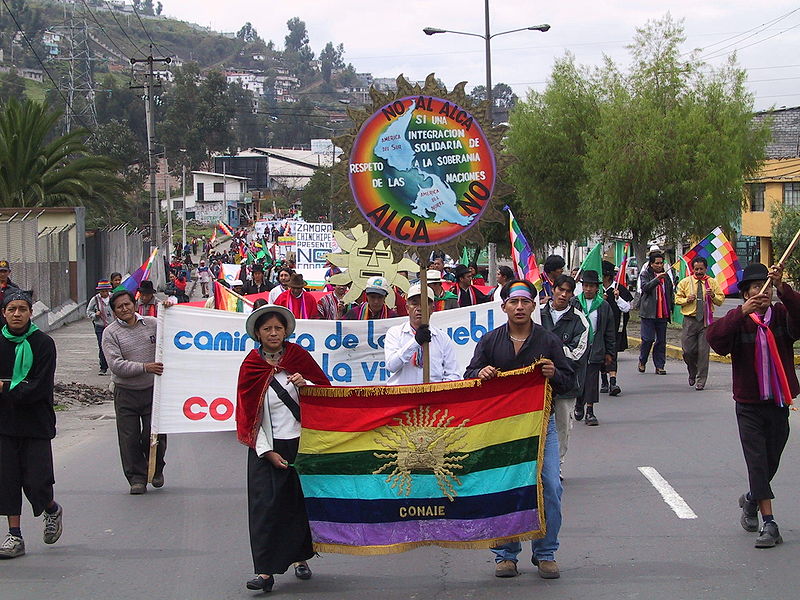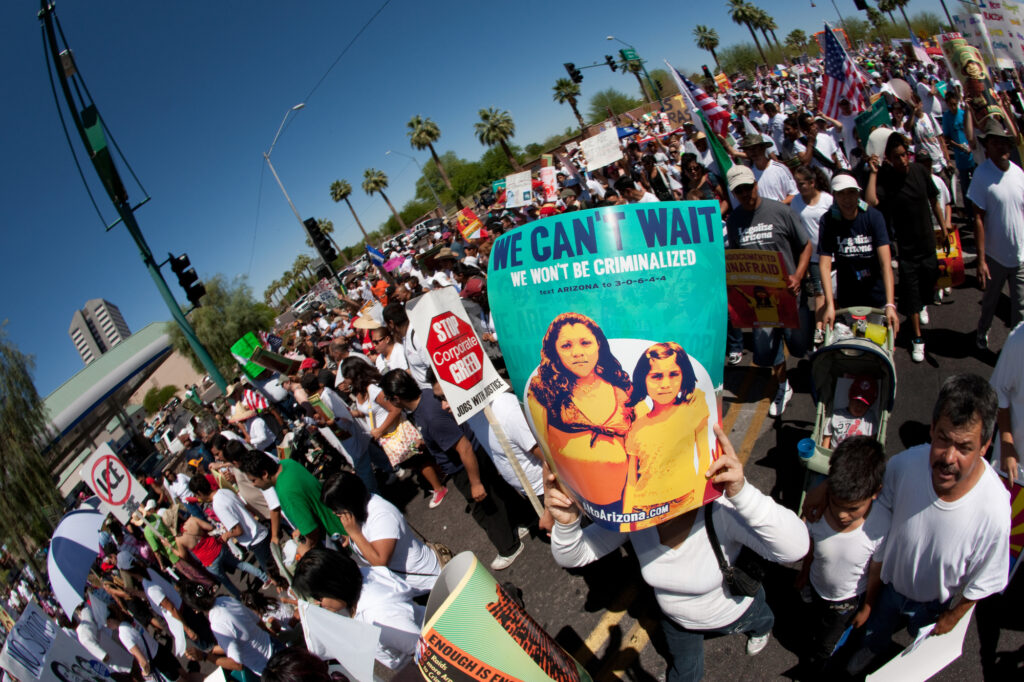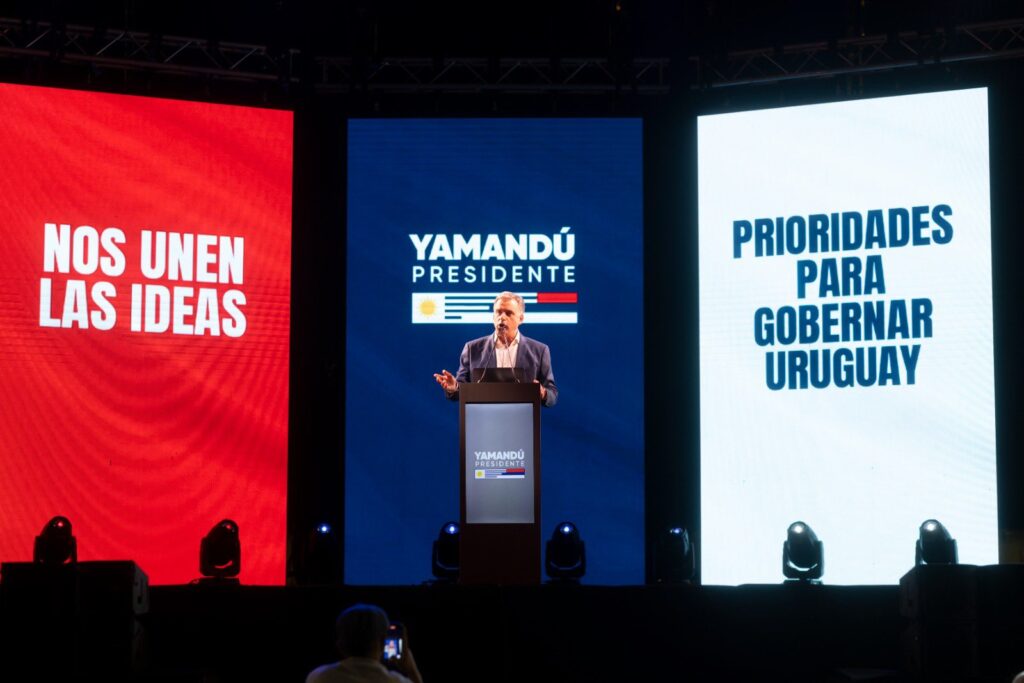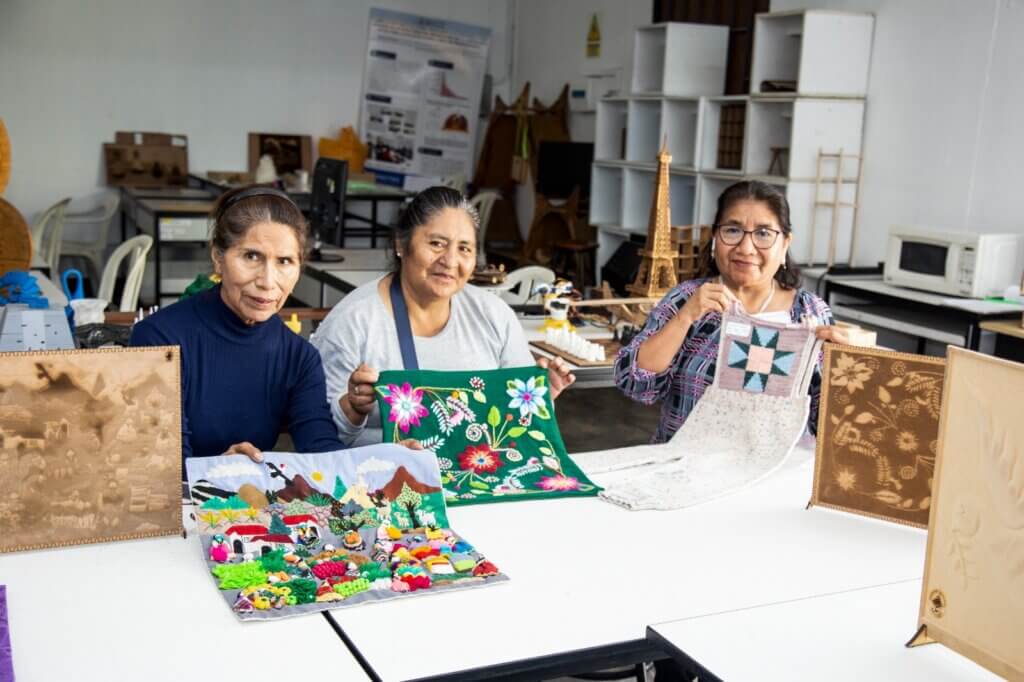Ecuador’s protests show no signs of slowing down as thousands of indigenous people traveled to Quito this week to participate in a national strike against President Lenin Moreno’s austerity cuts.
For over two decades, indigenous organizations and protests have played a key part in forcing three Ecuadorian presidents to step down.
In 1997, President Abdalá Bucaram was impeached in a decision supported by the indigenous Pachakutick movement. In 2000, protests led by the Confederation of Indigenous Nationalities in Ecuador (CONAIE) also contributed to Jamil Mahuad’s resignation, and in 2005, aided by the military, CONAIE pressured then-president Lucio Gutiérrez to step down.
Judging by the actions of the current president, who moved his government from the capital of Quito to the port city of Guayaquil to avoid demonstrations by the CONAIE, indigenous protests will also be significant in 2019.
Read more: Austerity cuts trigger violent protests in Ecuador
The president is refusing to retract the austerity measures, and has called the nationwide protests a coup attempt, accusing former president Rafael Correa of organizing them.
“What has happened is not a manifestation of social discontent in protest of a government decision,” Morena said, according to Reuters. “The lootings, vandalism and violence show there is an organized political motive to destabilize the government.”
The scale of demonstrations has also increased since the arrival of indigenous groups. Reuters reported that around 7,000 indigenous protestors arrived in Quito on Monday October 7, where residents of the capital enthusiastically welcomed them and provided them with food and water.
The following day, protesters briefly stormed the National Assembly, but were removed by security forces. The Ecuadorian government has since imposed a curfew from 8 p.m. until 5 a.m.
CONAIE has accused Moreno of installing a “regime of terror” in Ecuador and criticized the “excessive violence” used by security forces–they have uploaded a series of videos on Twitter allegedly depicting injured people being rushed to the hospital after clashes with security officials. The Guardian reported that some video footage showed a police officer beating protesters who were lying on the ground, and opposition groups say the government is carrying out human rights abuses in order to stem the protests.
#Atención
— CONAIE (@CONAIE_Ecuador) October 9, 2019
Continúa represión desmedida en Quito, calle Benalcazar, Centro Histórico. Que lo sepa el mundo@inredh1 @CIDH pic.twitter.com/Ao5UQO5Bfr
“Excessive violence continues in Quito, Benalcazar road, Historic Center. So that everyone knows”
Outside of Quito, CONAIE declared a state of emergency in indigenous territories, stating that “military and police officers that enter indigenous territories will be detained and subject to indigenous justice.”
The national strike is also causing severe losses for the economy. According to the Ministry of Energy, indigenous groups have stalled oil production by seizing the state company EP Petroecaudor’s oil wells contributing to a 30 percent decrease in petrol demand and a daily loss of $3.4 million for the company since October 3.
CONAIE affirmed that it will not stop protests until Moreno removes the austerity measures.
Founded in 1986, Conaie has a long history of organizing anti-government protests. The organization led a strong indigenous movement in 1990, during which they blocked roads to force the government to pass a list of reforms.
Moreno’s staunch refusal to backtrack on austerity measures and CONAIE’s uncompromising stance to keep protesting until he does so has left Ecuador in a stalemate.
Unlike in previous situations where indigenous-led protests have pressured presidents to step down, Moreno still has the support of the military and the police which puts him in a stronger position to sustain the demonstrations.











